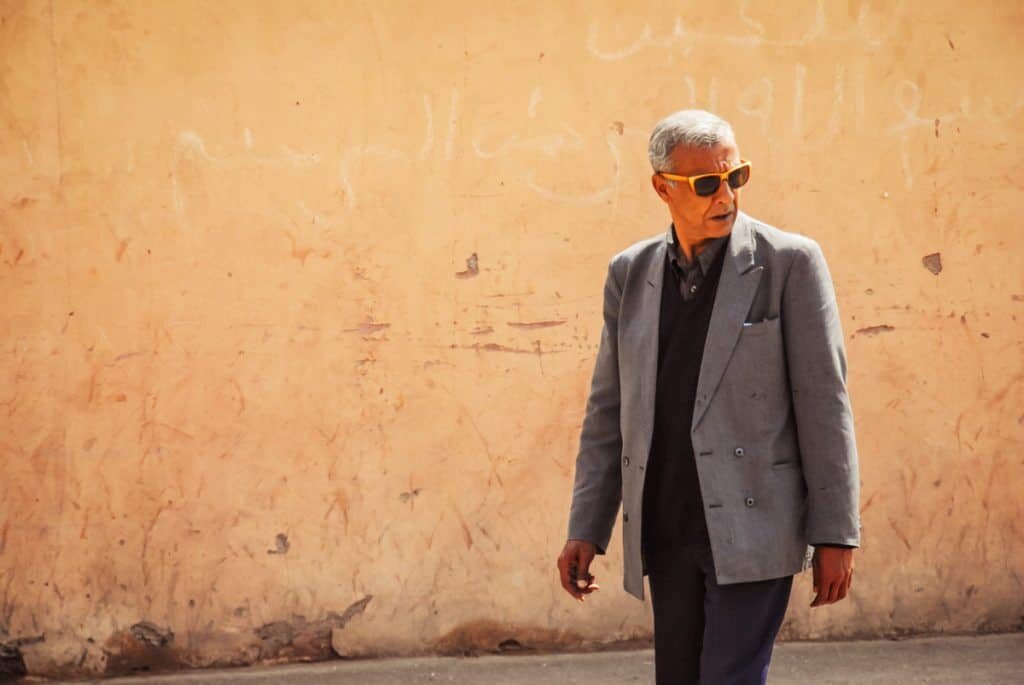
Taking Photos of People Whilst Travelling
Capturing an image that depicts the way of life, local traditions and beautiful features of people is both challenging and rewarding. Travel photography can lead to unexpected friendships and moments of cultural immersion, you’ll find most times it will be portrait photography that creates these opportunities.
Photographing portraits of people in various cultural situations is a big part of travel photography. It can also be a daunting prospect to approach someone you don’t know and ask to take their photo…or do you zoom from a distance and get your creep on? I’ve put together some tips on taking portraits whilst travelling, especially in culturally sensitive destinations.
Below you’ll find ways that I approach people for photos when travelling and some examples of images created along with the stories that go with them.
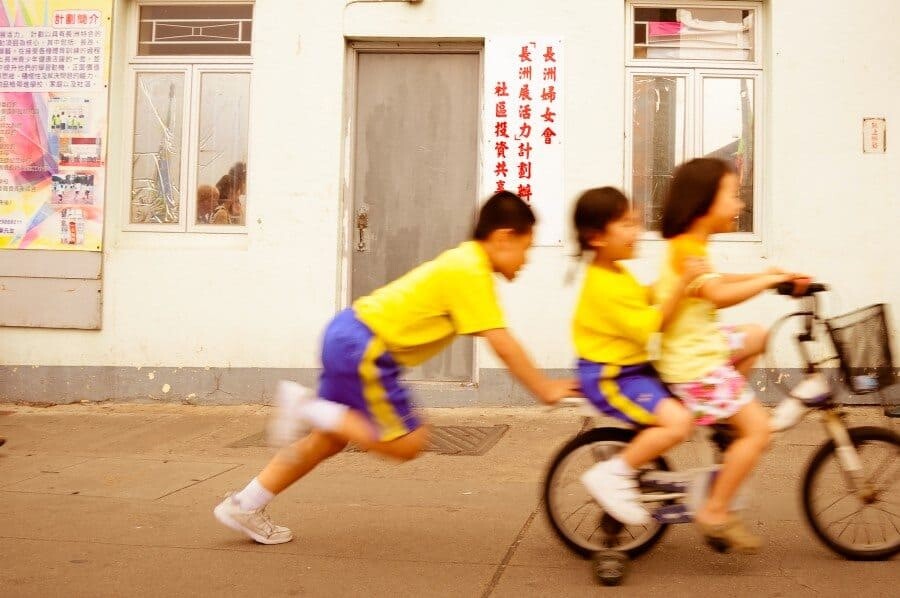
Cheung Chau Island, Hong Kong: This island is filled with bicycles and I wanted to capture a shot that showed this along with the happy nature of the people who lived there. I’d captured another shot but then these children rode past squealing with excitement on their way home from school.
Approaching People
A smile goes a long way. Sometimes it will make or break a photo and I’m not talking about the subject. Smiling at the people you want to photograph will quickly put them at ease in your presence. Try not to approach with a camera in front of your face in full tourist mode, take the time to meet people, have a chat and you’ll find the images will be ten times more meaningful.
Making your subjects comfortable before taking a photo typically results in those intimate portraits with a beautiful sparkle in the eyes or happy wrinkles. Personally I hate having my photo taken so I turn that feeling around and treat people how I’d like to be treated if someone was approaching me for a shot. The snap and dash method never works and you’ll probably end up forgetting where you took it or why.
Getting to know your subject or just having a brief interaction with them will give you a small insight into their personality which you can then use in the composition or your image.
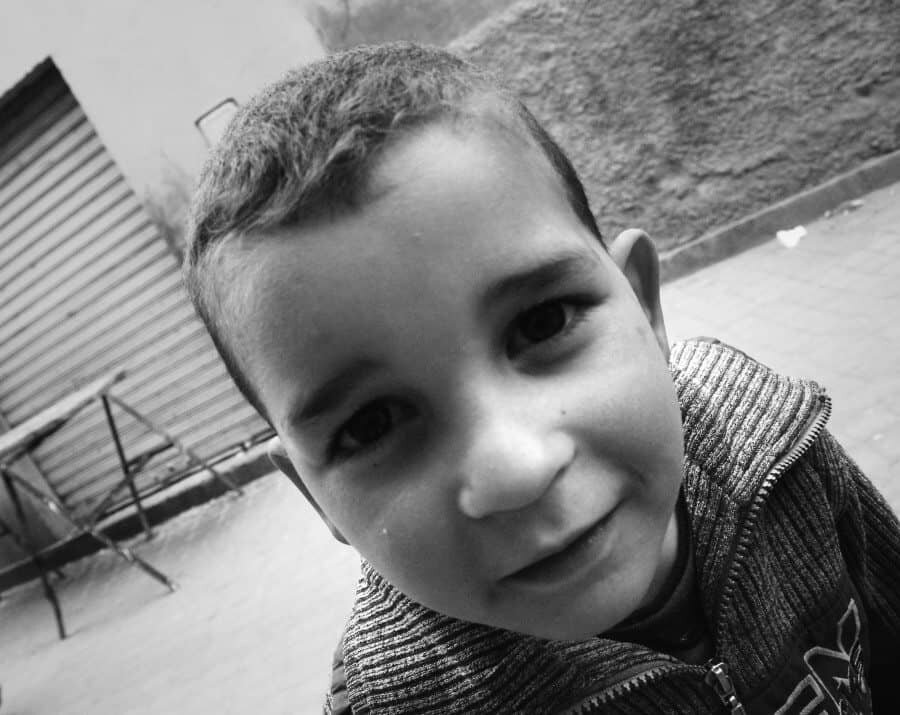
Marrakech, Morocco: While riding a bicycle around the city I got a punctured tyre in an alley. This little guy and his brothers were quick to help out and we played soccer until his older brother fixed up the tyre…having a camera here made the moment extra special!
Cultural Sensitivity
Getting back to the snap and dash method, it’s not very respectful towards anyone, especially someone who is just going about their daily routine. Looking from the outside, someone can look photogenic and intriguing but they might feel shy and watched.
Knowing a little about the culture and people will enable you to judge the situation and approach with sensitivity in order to capture a portrait.
If you’re looking to capture street scenes with locals in your shot just go about it discreetly. Side profiles with movement always work well in showcasing a scene, most times you won’t need to see someone’s full face in order to document the culture.
Also take note that if you’re looking to sell your images or publish them, you may need a model release if a person’s face is visible so it can be worthwhile to simply find a creative way in which you avoid this.
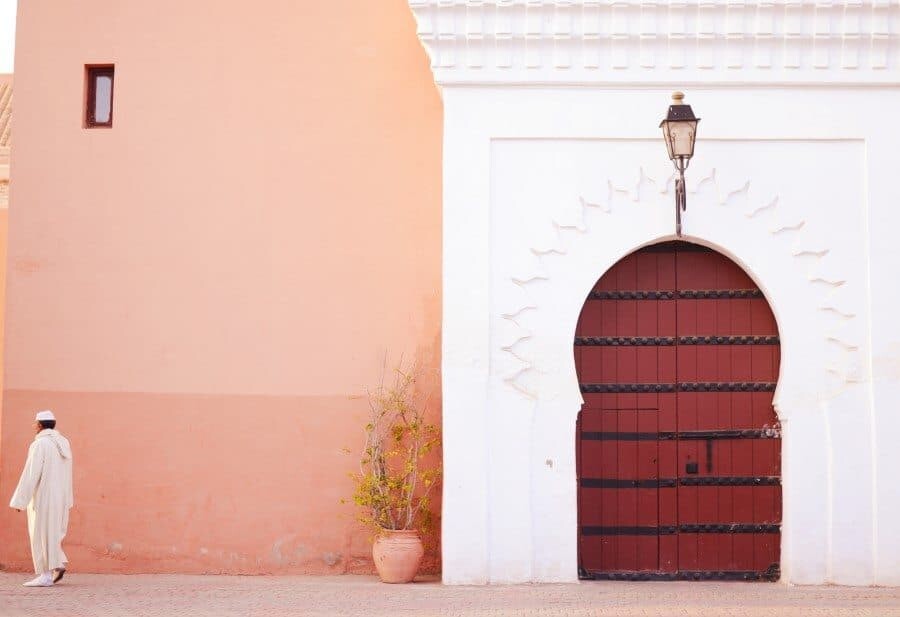
Marrakech, Morocco: Using other elements to compose a shot and avoid showing faces is one way to remain culturally sensitive.
Composition
Portrait photography is all about composition. Waiting for the right moment if someone is walking down the street, lining up facial features to ensure they’re symmetrical or finding that perfect background. Composition relates to where you place the subjects in your image and taking the time to think about it, will go a long way in improving your photography.
For more detailed techniques you can read my post about ‘Creative Composition’ in travel photography.
With people and portrait photography, light will be a big element when it comes to composition. Ensure your subject is well lit yet not squinting because the light is too bright, alternatively you can use shadows to create depth to your image and highlight certain areas of the face/body.
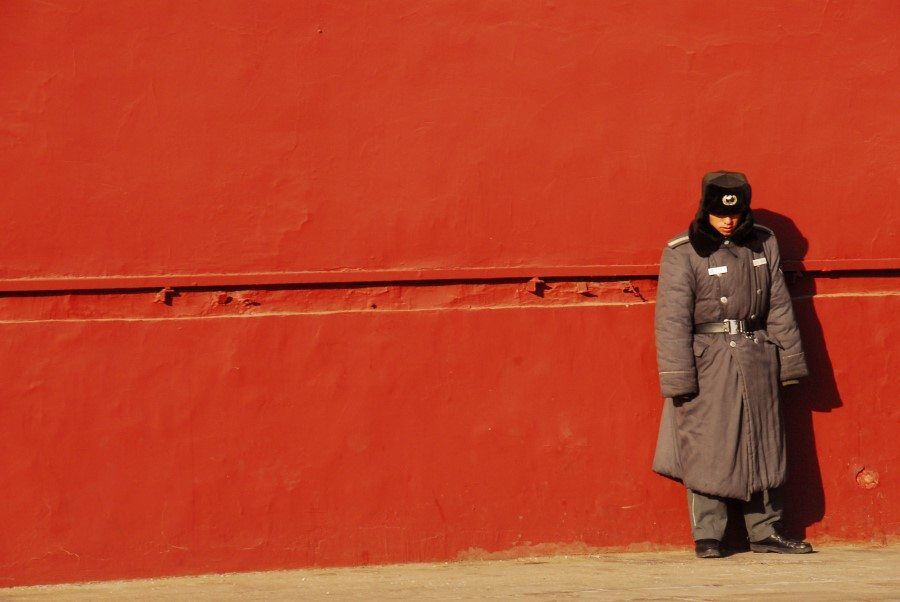
Beijing, China: Composing your image can make all the difference. Using the rule of thirds is a great way to position your subject within the image.
Finding Details
In order to avoid any awkward social interactions, you may wish to simply focus on details. Obviously it will still be awkward if the detail you choose to focus on is someone’s eyes but…what about their shoes, outfit or hat? Incorporating just a single element can still tell a story and will create a sense of mystery about your subject.
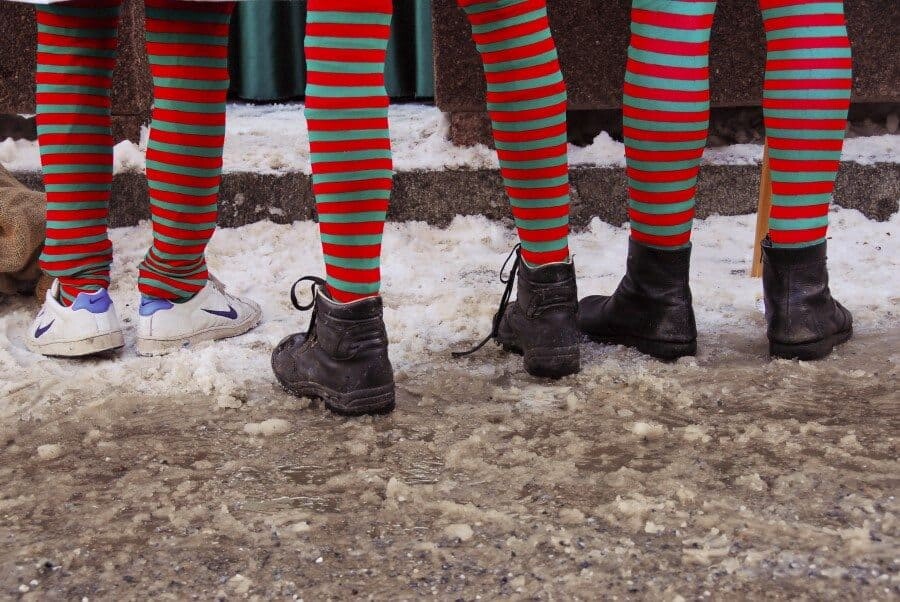
Samnaun, Switzerland: Finding details that can help tell the story is a creative way to take a portrait. This shot was captured during the annual Santa Claus festival and these guys were dressed as a team of elves.
Exposure
When shooting portraits, it can be helpful to increase your exposure to +0.7 or +1 in order to add a pop of brightness to faces. I’ve found that shooting with a higher exposure acts as a natural flash effect, highlighting facial features and creating almost a soft blur look on the skin whilst remaining sharp.
Try adjusting the exposure based on the light conditions, too much will create a blow out of detail, however just the right amount will succeed in showcasing the face with vibrance.
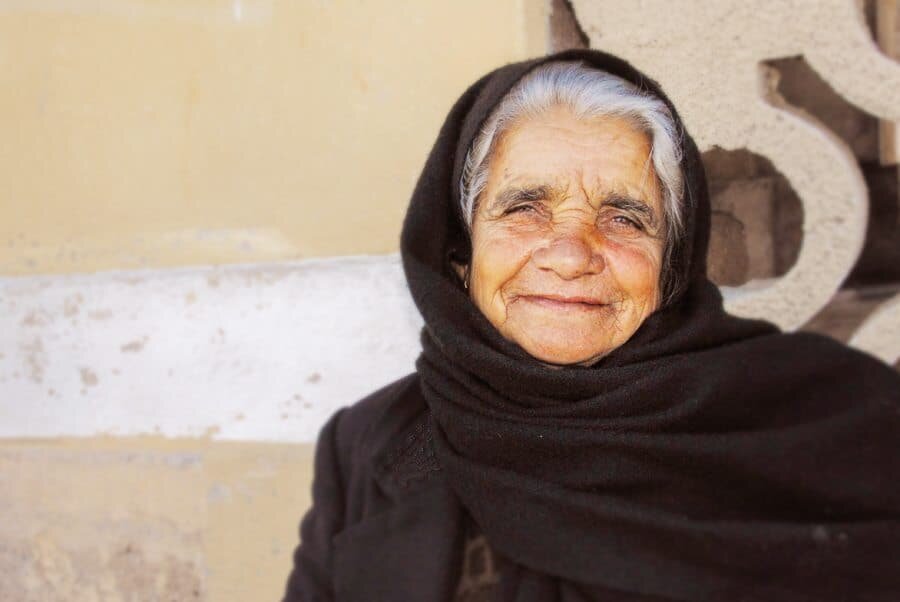
Crete, Greece: After seeing her beautiful face watching people walk by, I couldn’t resist approaching this woman to take her portrait. You can almost feel the stories in her eyes.
Creating Bokeh
Bokeh is a portrait photographers secret to beautiful images. Keeping the subject sharp but the background a blurry mess of colour ensures no distractions and only a foreground of detail.
Achieving bokeh is actually quite simple and it comes down to both your chosen lens and aperture settings. Prime lenses typically produce the best bokeh results, those with low apertures such as a 50mm f/1.8 work great! Then it’s a matter of setting the aperture to the lowest setting possible and clicking away. You’ll find bokeh works best if there is a consistent colour behind your subject or no other objects close by. I’ll be sharing more on bokeh soon J
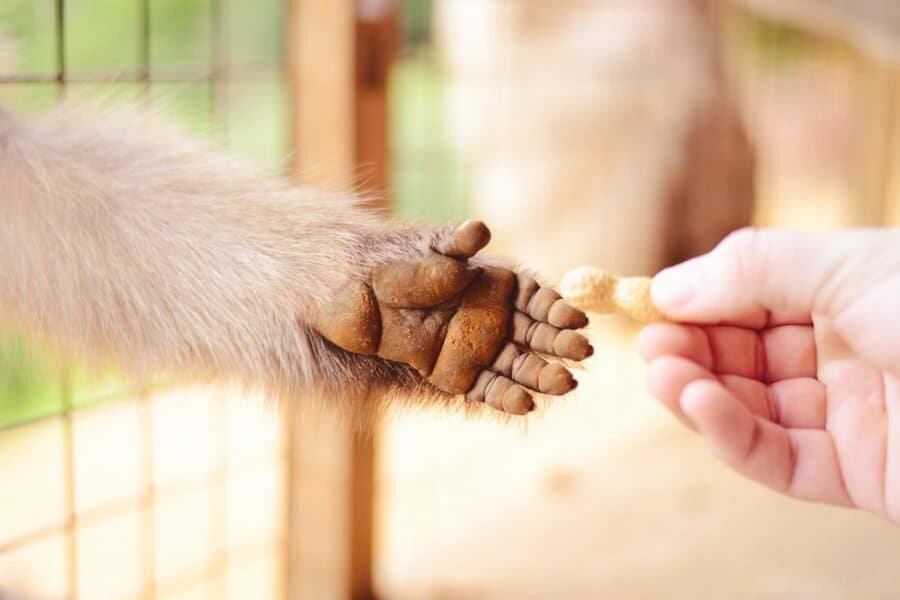
Arashiyama, Japan: This is an example of bokeh with the blurred background forcing the viewer to look at the subject which in this case is me giving a monkey a peanut. Also just to be clear, I’m the one in the cage here…the monkey was free to run back to the forest whenever he wanted 🙂
Paid Portraits When Travelling
In a lot of destinations now you’ll find people put their hands out to request money if they see you approaching with a camera. In my opinion, that’s completely fair.
Ten years ago when technology wasn’t so evident and in your face most people would either be happy to smile for a photo or at least were curious about what the result would be. Now sharing experiences has become such a habit that some tourists wander in autopilot, snapping photos like crazy and it must get a little overwhelming if you have photographers staring you down all day long.
Let’s take Marrakech in Morocco as an example. I first visited in 2007 and in the main square, Djeema el Fna, storytellers and performers would have a hat or basket on the ground for money if you were wanting to take a photo…a well organised and at most times respected practice. In the medina I would happily get a smile in return and a nod agreeing to a portrait, sometimes I’d even take an email address to forward the photos I had captured.
When I returned in 2015, things were a little different, portraits had become a side hustle. I was being approached and asked if I wanted to take a photo for money. There were catch phrases being repeated as I walked past and I felt like I was getting frowns instead of smiles. Don’t get me wrong, not everyone was like this and Marrakech still has an enchanting atmosphere with authentic photo opportunities but there was a definite difference in attitude towards photography. This change has to come directly from the growth of media and the influx of tourists that now visit Marrakech since it’s become so popular. Here’s hoping it doesn’t change too much more!
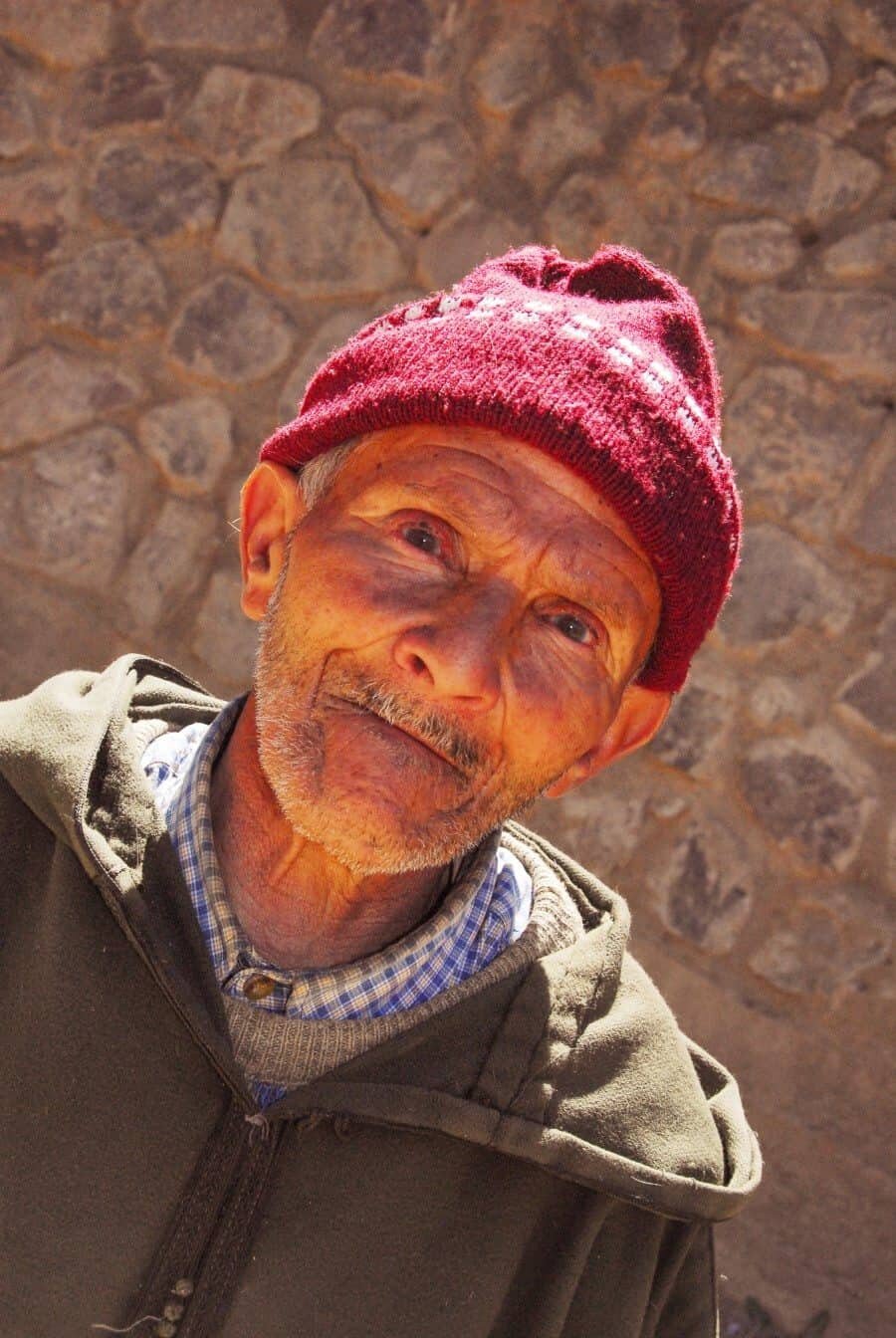
Imlil, Morocco: We were hiking in the Atlas Mountains when I stayed back to take some photos of the landscape. I soon noticed a lonely figure approaching from a path higher up and as he slowly walked towards me he stopped to stare and I showed him the photo I had taken. He put his hand out then stood and I assumed he wanted his portrait taken…I gave him an Australian dollar which he studied and then showed him his portrait which put a little smile on his face. Then he continued his walk down the mountain and I took a deep breath thankful for such an interaction.
Using Natural Surroundings
If you’re lucky, an opportunity will present itself in which you can frame a subject using natural surroundings. Keep your eyes peeled for trees that can be used to wrap around a subject, even better if the two are relevant to a destination’s culture and flora. Using natural surroundings will on most occasions enable you to create a shot that’s truly unique and one that creatively showcases a scene rather than simply snaps it.
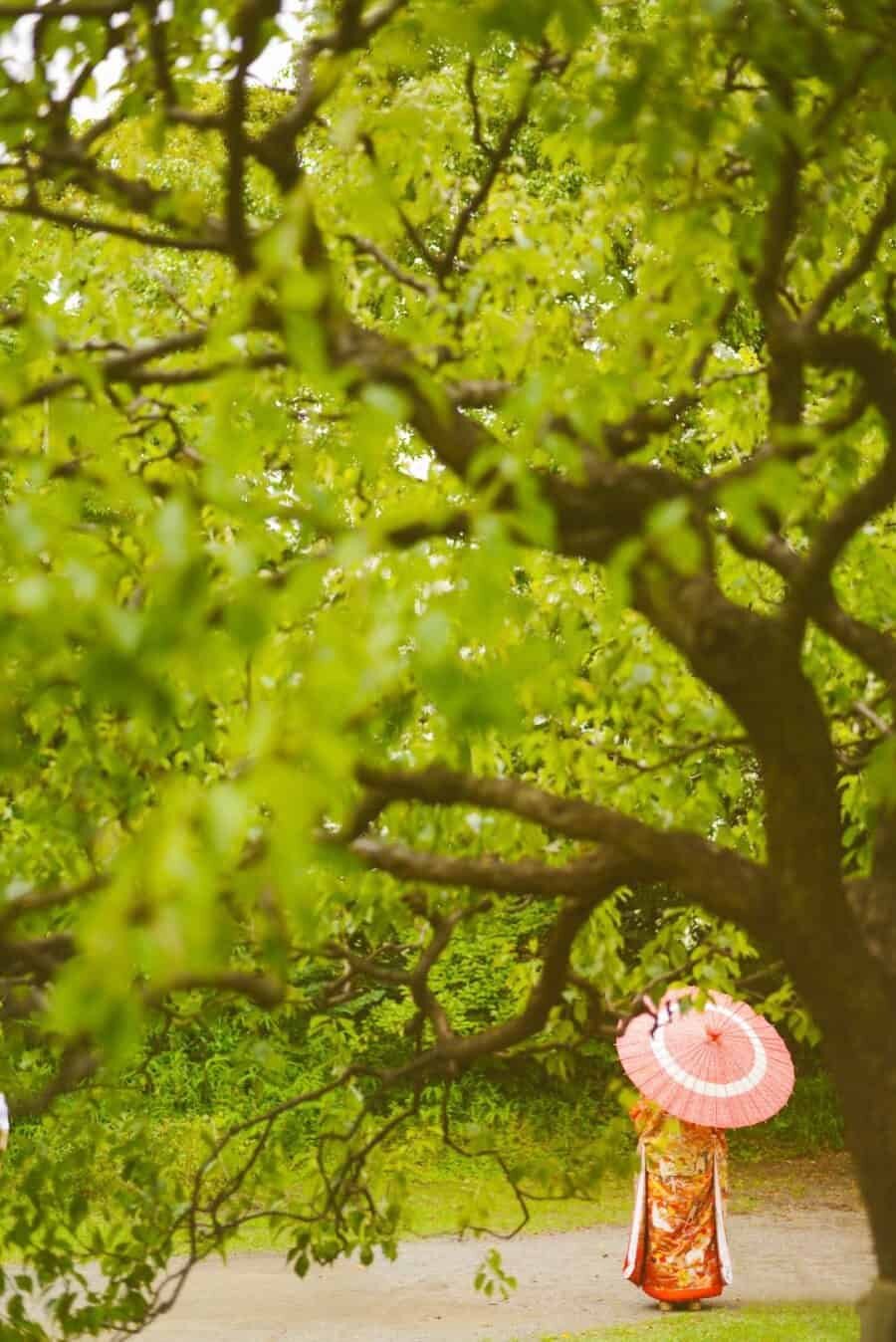
Tokyo, Japan: A traditionally dressed Japanese woman in the park made for a great subject with the tree framing her brightly coloured dress and parasol. Because her back is turned the image doesn’t require a model release yet still tells a story of Japanese culture.
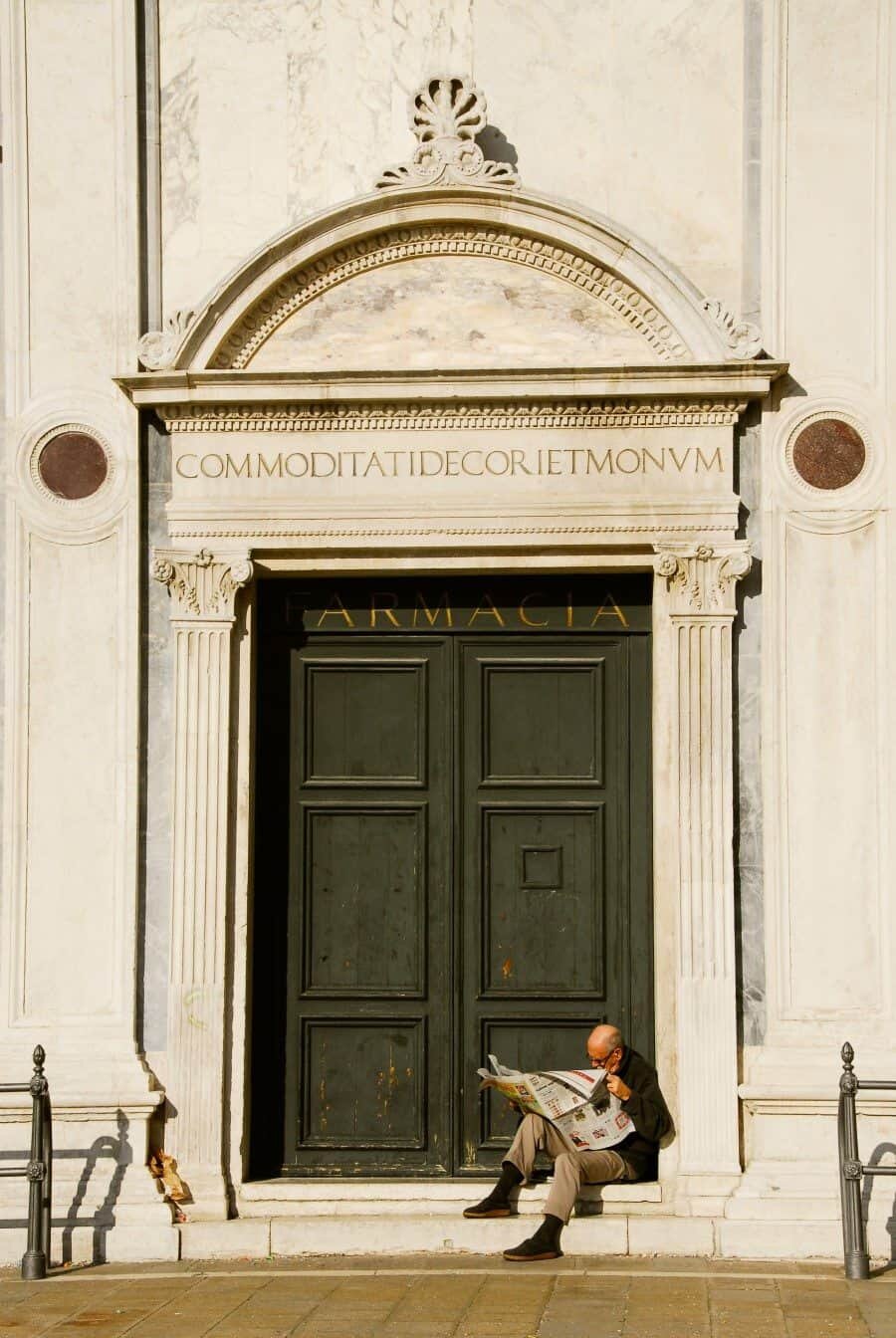
Venice, Italy: An example of capturing a local going about their day and blending it with a sense of place. Reading his paper on the steps of this cathedral, the composition of the scene was already done for me.
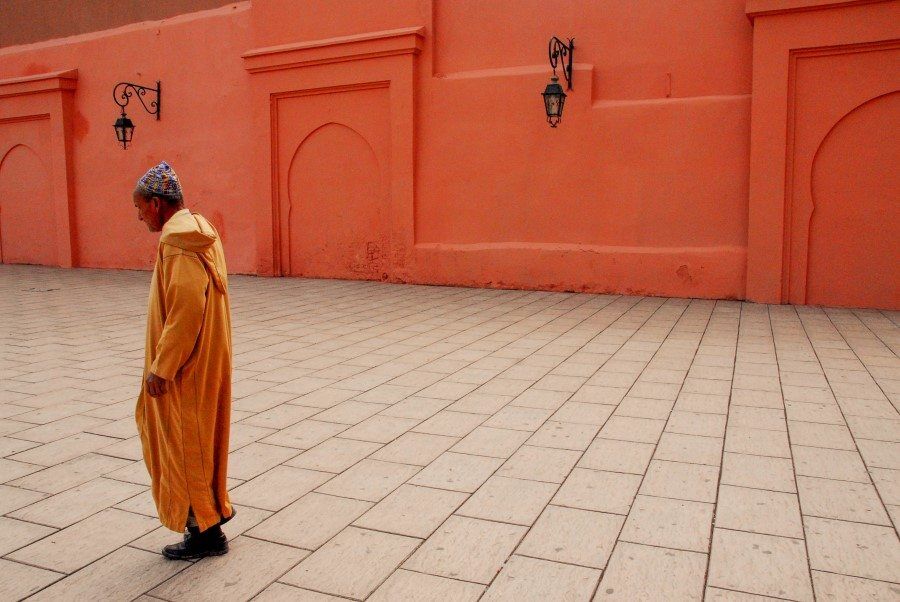
Marrakech, Morocco: Perhaps the favourite travel portrait I’ve taken, and also one of my first. In Marrakech the colours and culture ooze with photography possibilities. In order to remain culturally sensitive I was attempting to photograph people walking past this wall at the Koutoubia Mosque when a man walked past in his orange djellaba.
Your turn: If you’ve taken some great travel portraits lately, leave a link in the comments below to your website or Instagram so I can check them out…
Share via Pinterest for later with the image below ↓
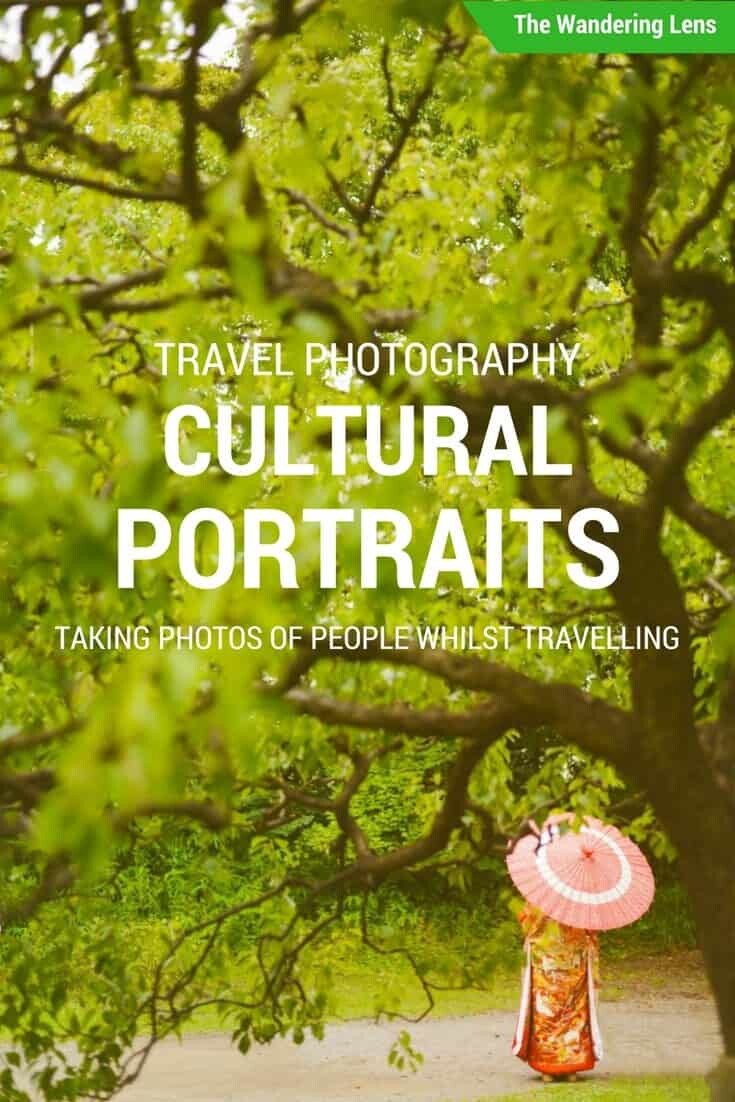
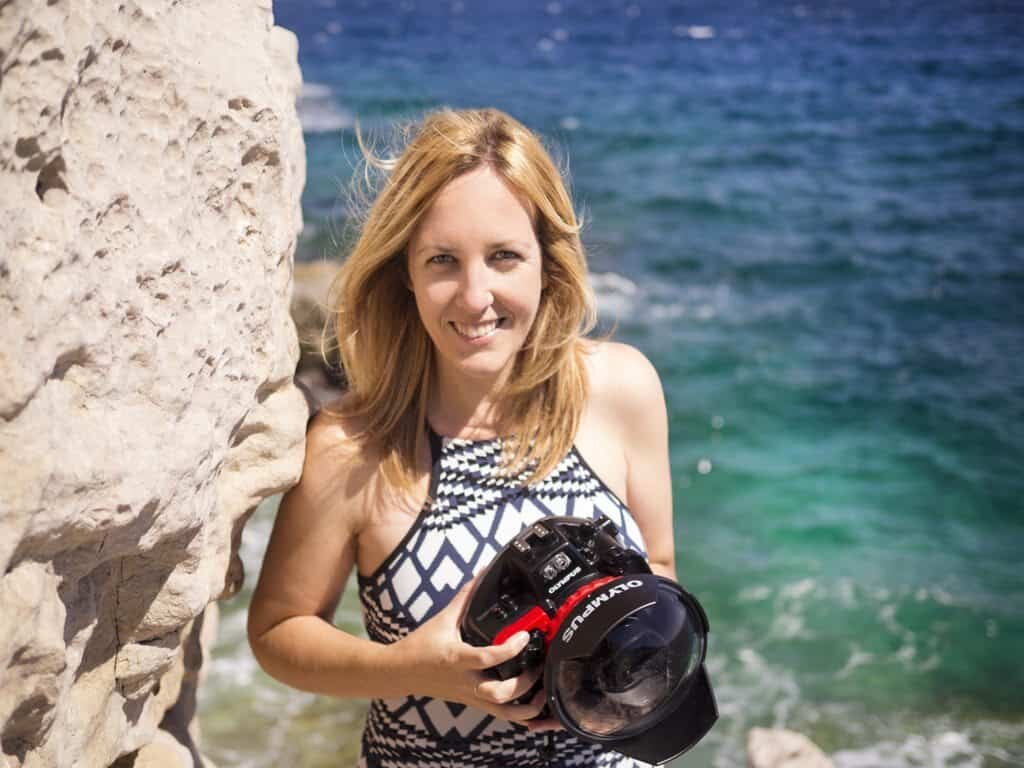
Hello! I’m the founder and photographer behind The Wandering Lens.
With 17+yrs experience as a professional travel and landscape photographer, all advice found on this site is from my personal experience on the road. I hope it’s useful for your own travels and would love to hear in the comments about your trips and experiences around the world.

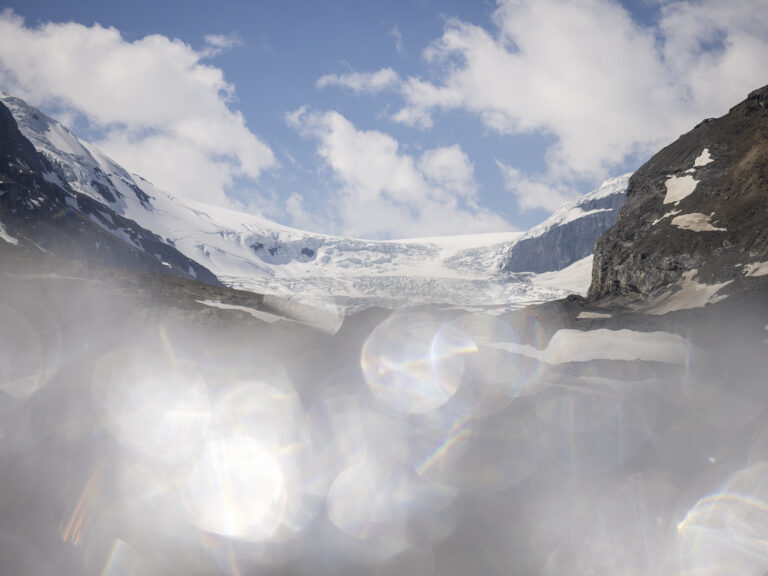
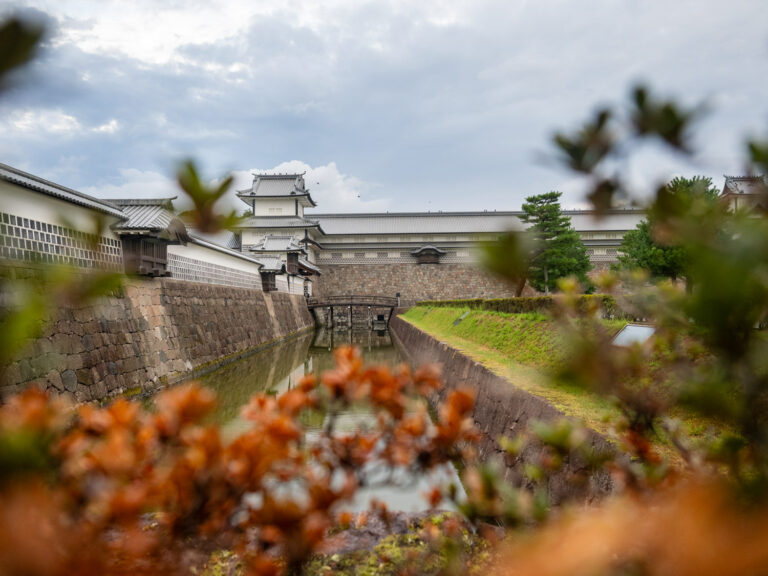
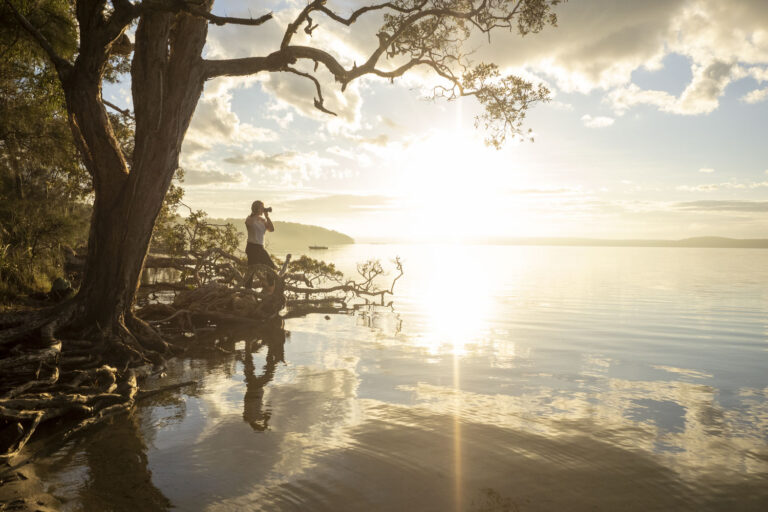
Blog Comments
T Chendil Kumar
April 22, 2017 at 8:30 pm
Hi Lisa,
Thank you for this informative and useful post. I liked your idea of ‘smile’ as it endears you to strangers and rarely do people shoo you off. Next week I will be travelling to Singapore and found your best photography locations to be an excellent guide. You gave some offbeat ideas like Tiong Bahrain.
I’ve just posted my people portraits in my travel blog http://www.rotatingswamy.com
Will be great if you can check it out and give me tips to improve.
Regards
ck
T Chendil Kumar
thewanderinglens
April 26, 2017 at 10:11 pm
Thanks for writing! I wish you a wonderful time in Singapore, there’s so much to see and Tiong Bahru is definitely worth a wander with your camera 🙂
Your images look great, I especially like the ones from Mathura you posted on April 2nd. Great timing to capture the expressions on faces. My suggestion would perhaps be to look for alternate angles, try to get creative in how you capture the scene whether it’s by framing the portrait, playing with light or working with shadows.
Enjoy Singapore!